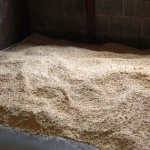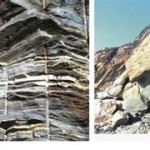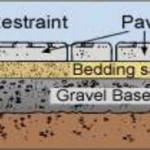Essential Aspects of Gravel Bedding for Footing
Gravel bedding plays a crucial role in providing a stable and well-drained foundation for footings, which are the structural elements that transfer the load of a building to the underlying soil. Here are some essential aspects of gravel bedding for footing:
1. Material Selection:
The gravel used for bedding should be clean, well-graded, and durable. It should be free from organic matter, clay, and other impurities that can compromise its stability and drainage properties. Typically, crushed stone or washed gravel with a particle size ranging from 3/8" to 1-1/2" is recommended.
2. Bedding Layer Thickness:
The thickness of the gravel bedding layer depends on the size of the footing and the bearing capacity of the soil. For small footings on stable soils, a thickness of 4-6 inches may be sufficient. However, larger footings or those on weaker soils may require a thicker bedding layer of 8-12 inches.
3. Compaction:
Proper compaction of the gravel bedding is essential to ensure adequate support and prevent settlement. The gravel should be compacted in lifts of no more than 4-6 inches in thickness using a plate compactor or vibratory roller. Each lift should be compacted to a minimum of 95% of its maximum dry density, as determined by standard compaction tests.
4. Drainage:
Gravel bedding provides excellent drainage, allowing water to infiltrate and flow away from the footing. This helps prevent water accumulation and saturation of the soil beneath the footing, which can lead to settlement and structural problems.
5. Load Distribution:
The gravel bedding layer helps distribute the load of the footing over a wider area of soil, reducing the pressure on the underlying soil and minimizing settlement. This is particularly important for footings on soft or weak soils that have a limited bearing capacity.
6. Frost Protection:
In cold climates, the gravel bedding layer can provide frost protection by preventing frost from penetrating deep into the soil beneath the footing. Frost can cause the soil to expand and heave, which can damage the footing and the structure above.
7. Leveling:
Gravel bedding can be used to level the base of the footing, ensuring that the footing is placed on a flat and even surface. This helps prevent uneven settlement and structural problems.
Conclusion:
Gravel bedding is an essential component of footing construction, providing support, drainage, load distribution, frost protection, and leveling. By carefully selecting the gravel material, ensuring proper compaction, and understanding its various functions, contractors can create a stable and durable foundation for their structures.

Footing Fundamentals

Solved 1 Create A Quantity Take Off Through Ms Excel That Chegg Com
Solved Please Help Me To Solve The Quantity Of Gravel Bedding Sof Cf Course Hero

8 Most Important Types Of Foundation Civil Engineering

Structural Design Of Foundations For The Home Inspector Internachi
Solved For Problem 36 38with Solution Pleasea 12 Column Chegg Com

3 Reasons Why It S Important To Use Crushed Stone Under Concrete Slabs Irwin

8 Most Important Types Of Foundation Civil Engineering

Do You Need Gravel Under Concrete Patio Slab Footings

Xushiguang How To Install A Foundation Drain








